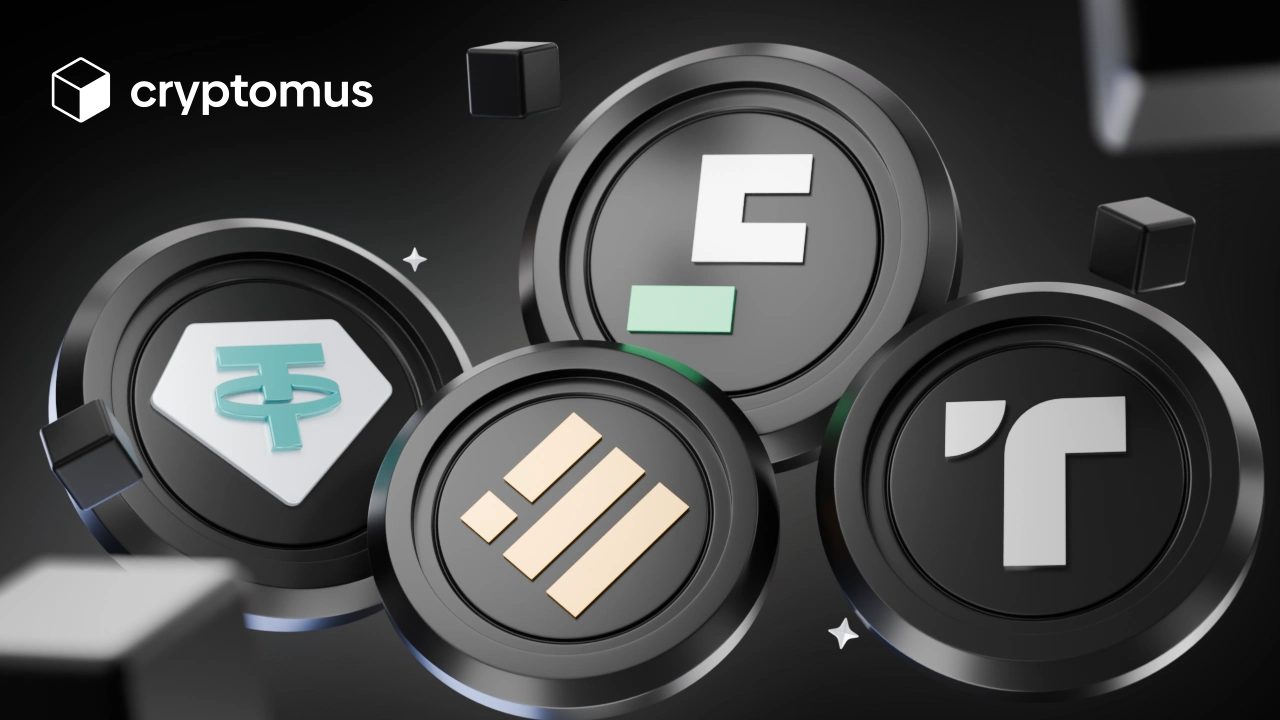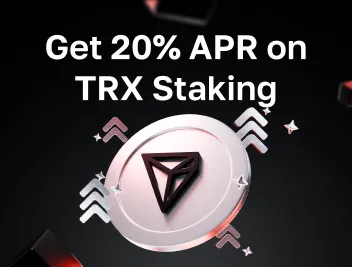
USDT vs TUSD vs BUSD vs FDUSD
In today's article, let's talk about stablecoins and their importance to the cryptocurrency world. Stablecoin is a cryptocurrency that allows to store assets with minimal volatility. To put it another way, the goal is providing a stable value compared to the underlying asset, which can be a product or fiat money. Stablecoins are often used as a savings exchange or payment method, but they aren’t all the same.
In this article, we’ll compare four popular stablecoins: USDT, TUSD, FDUSD, and BUSD. We will explore what each coin is and identify the key differences. At the end, you’ll find a direct comparison to better understand the features of stablecoins.
What Is USDT?
Tether (USDT) is the first and well-known stablecoin on the market, created in 2014 by Tether Limited. The company originally named it Realcoin but rebranded it in 2015. Thether has a 1:1 ratio with the dollar. The capitalization of the USDT market stands at over $118 billion, with a daily trading volume of around $35 billion. But it was later revealed that such a coin is also pegged not only to the dollar but also to loans and commercial papers.
What Is TUSD?
TrueUSD (TUSD) is a stablecoin that is pegged to the US dollar and is highly transparent. The emitter is Techteryx (formerly TrustToken), they also developed the coin in 2018. TUSD is fully backed by US dollars, which are held in escrow accounts. To ensure complete transparency, the assets undergo regular audits by independent organizations. This process gives assurance to users that each token is indeed backed by real assets. The market capitalization is $495 million, which is less compared to USDT. This stablecoin offers a stable price and is the preferred choice for customers looking for stability and transparency in crypto transactions.
What Is FDUSD?
First Digital USD (FDUSD) represents one of the newest stablecoins, also pegged to the dollar. In this case, the issuer is First DIgital Trust, headquartered in Hong Kong. The company released the coin in 2023 and is currently funded by dollar-denominated and highly liquid reserves. FDUSD is a programmable instrument capable of providing financial contract processing, escrow and insurance services. This coin targets institutional investors and offers them a stable asset for transactions and trading.
What Is BUSD?
Binance USD (BUSD) is a stablecoin that was launched in 2019 by cryptocurrency exchange Binance in partnership with Paxos. The coin maintains a peg to the dollar and stays in bank accounts that undergo regular verification. The official website publishes the results of the audit to ensure full transparency. BUSD operates on Ethereum and Binance Smart Chain networks. Many companies used the coin for trading, payments, DeFi and other applications. BUSD has a market capitalization of over $69.45 million and a daily trading volume of over $4,45 million. BUSD is widely used on the Binance platform and offers users a stable asset for trading.
Key Differences Between USDT, TUSD, FDUSD, And BUSD
As you can see from the descriptions of the coins, all of them have features. For your convenience, we’ve prepared a table with the key differences:
| Stablecoin | Emitter | Backing | Market Capitalization | Transparency | Use Case | |
|---|---|---|---|---|---|---|
| USDT | EmitterTether Limited | BackingMixed reserves | Market Capitalization$118 billion | TransparencyControversial, partially audited | Use CaseWidely used in trading | |
| TUSD | EmitterArchblock (formerly TrustToken) | BackingUS Dollars | Market Capitalization$495 million | TransparencyHigh, regularly audited | Use CaseFocused on transparency | |
| FDUSD | EmitterFirst Digital Trust | BackingUS Dollars | Market Capitalization$450 million | TransparencyHigh, regularly audited | Use CaseEmerging market | |
| BUSD | EmitterBinance and Paxos Trust Company | BackingUS Dollars | Market Capitalization$69.45 million | TransparencyHigh, regularly audited | Use CaseBinance ecosystem |
Head-To-Head Comparison Of Stablecoins
We have prepared a head-to-head comparison of the coins, highlighting their market capitalization and purposes. This analysis will help you make the right decision according to certain facts.

USDT Vs. TUSD
USDT is a dollar-pegged stablecoin emitted by Tether, with a market capitalization of $118 billion. TUSD is a stablecoin issued by Techteryx, an Asian company, and has a market capitalization of $495 million. It’s 238 times smaller than USDT.
USDT Vs. FDUSD
USDT is a dollar-linked stablecoin emitted by Tether Limited, with a market capitalization of 118 billion. FDUSD is a dollar-pegged stablecoin issued by First Digital Trust with a market capitalization of $400 million, 295 times smaller than USDT.
USDT Vs. BUSD
USDT is a dollar-pegged stablecoin emitted by Tether, with a market capitalization of $118 billion. BUSD, issued by Binance, has a market capitalization of $69.45 million, which is 1700 times smaller than of USDT.
TUSD Vs. FDUSD
TUSD is a dollar-pegged stablecoin emitted by Techteryx, with a market capitalization of $495 million. FDUSD, issued by First Digital Trust, has a market capitalization of $450 million, making TUSD approximately 1.1 times larger than FDUSD.
TUSD Vs. BUSD
TUSD is a dollar-linked stablecoin emitted by Techteryx with a market capitalization of $495 million. BUSD, issued by Paxos in partnership with Binance, has a market capitalization of $69.45 million, making BUSD about 7.13 times larger than TUSD.
FDUSD Vs. BUSD
FDUSD is a dollar-pegged stablecoin issued by First Digital Trust, with a market capitalization of $400 million. BUSD, issued by Paxos in partnership with Binance, has a market capitalization of $69.45 million, making BUSD approximately 6 times larger than FDUSD.
In this article, we’ve compared popular stablecoins in detail to help you better understand their features. If you decide to purchase or trade USDT or BUSD, you can always choose the Cryptomus platform for your needs. Cryptomus offers high transaction speeds and low fees, with 0.1% for buyers and 0.2% for sellers. The platform also offers the option to stake stablecoins, allowing you to grow your assets.
Thank you for your attention! Please share your favorite and least favorite stablecoins in the comments.
Rate the article








comments
0
You must be logged in to post a comment